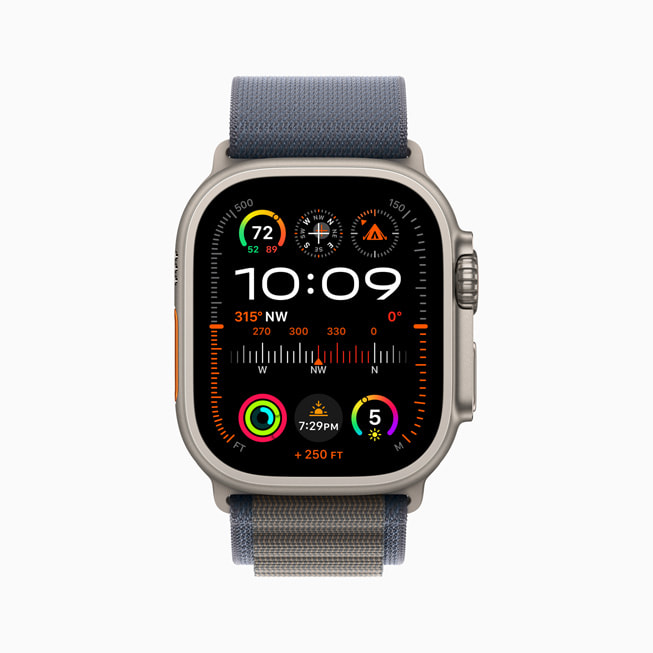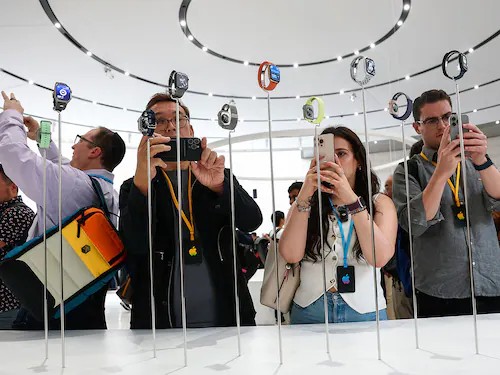The Core of Wellness: Deconstructing Apple’s Health Ecosystem
At the heart of Apple’s health strategy lies a powerful, interconnected ecosystem designed to empower users with actionable data. This system is not merely a collection of disparate apps and devices but a cohesive platform built on the foundations of the Health app, the Apple Watch, and pioneering research frameworks. Understanding these core components is essential to appreciating the depth of Apple’s commitment to personal and public wellness.
The Health App: The Centralized and Secure Hub
The Health app on the iPhone is the command center for all health-related data. It serves as a secure, centralized repository, aggregating information from the iPhone’s own sensors (like the accelerometer for step counting), the Apple Watch, and a vast array of third-party apps and connected medical devices. The latest iOS updates news consistently brings enhancements to this hub, adding new categories like medication tracking, mental well-being, and detailed sleep stage analysis. Its strength lies in its ability to present a holistic view of a user’s health over time, transforming raw data points—heart rate, activity levels, sleep patterns, blood oxygen—into understandable trends and highlights. This centralized model is a cornerstone of the latest iPhone news, as each new device brings more sophisticated sensors that feed directly into this comprehensive health picture.
Apple Watch: The Proactive Guardian on Your Wrist
While the Health app is the brain, the Apple Watch is the vigilant, always-on sensor. What began as a fitness tracker has evolved into a serious health monitoring device. The latest Apple Watch news often revolves around its life-saving capabilities. Features like the ECG app for detecting signs of atrial fibrillation (AFib), irregular rhythm notifications, blood oxygen monitoring, and fall detection have transformed the watch into a proactive guardian. There are countless real-world case studies where these features have alerted users to previously undiagnosed heart conditions or summoned emergency services after a hard fall, demonstrating its profound real-world impact. With each new iteration, Apple adds more sensitive and specific sensors, such as the temperature sensor initially aimed at improving cycle tracking, which holds future potential for fever detection and illness monitoring.
ResearchKit and CareKit: Empowering Global Medical Research
Beyond individual users, Apple extends its ecosystem to the global medical community through ResearchKit and CareKit. ResearchKit is an open-source framework that enables medical researchers to create apps for conducting large-scale studies, recruiting participants directly from their iPhones. This has democratized medical research, allowing for studies with unprecedented sample sizes and diversity. The famous Apple Heart Study, which enrolled over 400,000 participants, is a prime example of its power. CareKit, similarly, allows developers to create apps that help people manage their own medical conditions, from diabetes to post-surgical recovery. Central to this initiative is a fierce commitment to user privacy. The latest Apple privacy news and iOS security news always emphasize that participation is opt-in, data is encrypted, and users have granular control over what information they share, building a foundation of trust that is critical for sensitive health data.
From Personal Metrics to Public Health: Tackling Contemporary Challenges
Apple’s health initiatives are increasingly moving beyond individual fitness and wellness to address broader, more complex public health issues. By leveraging its vast user base and integrated technology, the ecosystem is uniquely positioned to provide tools and data that can help users navigate modern health crises, from environmental hazards to the growing mental health epidemic.

Environmental Health and Respiratory Wellness
The quality of the air we breathe is a critical public health concern. In response, Apple has integrated Air Quality Index (AQI) data directly into its Weather and Maps apps. This seemingly simple feature provides millions of users with immediate, location-specific information about airborne pollutants. For individuals with asthma or other respiratory conditions, this data is invaluable for making daily decisions, such as whether to exercise outdoors or keep windows closed. This focus on environmental factors represents a significant expansion of what “health data” means. As the Apple ecosystem news evolves, we can anticipate deeper integrations, perhaps with HomeKit-enabled air purifiers that automatically activate when outdoor AQI is poor. Even the latest AirPods Pro news, with features like Conversation Boost for auditory health, hints at a future where personal devices help us mitigate all forms of environmental exposure.
The Rise of Mental Health and Mindfulness
Recognizing the escalating global mental health crisis, Apple has made significant investments in tools to support mental well-being. The Mindfulness app on the Apple Watch encourages users to take moments for reflection and breathing exercises throughout the day. With iOS 17 and watchOS 10, Apple introduced a more comprehensive mental health suite, allowing users to log their momentary emotions and daily moods. The system then provides insights over time, helping users identify connections between their mood and lifestyle factors like sleep, exercise, and time in daylight. This data remains private to the user but can be a powerful tool for self-awareness or for facilitating more informed conversations with therapists or doctors. This initiative could even extend to other devices; one could imagine future HomePod mini news detailing its ability to play personalized, calming soundscapes based on a user’s logged stress levels.
The Challenge of Misinformation and Unregulated Products
In an era of rampant health misinformation and the proliferation of unregulated, often dangerous products, curated platforms have become essential. The digital world is flooded with unverified health claims and questionable wellness gadgets. Apple’s App Store serves as a crucial gatekeeper. The rigorous app review process, a frequent topic in iOS security news, helps to vet health and wellness apps, ensuring they function as described and do not make fraudulent or dangerous claims. This “walled garden” approach, while sometimes criticized, provides a layer of consumer protection that is absent on the open internet. By providing a trusted environment for health information and tools, Apple helps shield users from the digital equivalent of toxic, misbranded products, ensuring that the health advice and tracking they receive through their devices is based on credible science and secure technology.
The Next Frontier: Weaving Health into the Fabric of Daily Life
The future of Apple’s health ambitions lies in making health monitoring and guidance even more seamless, proactive, and integrated into the very fabric of our daily lives. Emerging technologies like augmented reality (AR), artificial intelligence (AI), and an ever-expanding network of connected devices are paving the way for a revolutionary new chapter in personal wellness.
Apple Vision Pro and the Future of Immersive Health
The most exciting Apple Vision Pro news may ultimately be in the health and wellness sector. Spatial computing offers transformative potential for medical applications. Imagine a physical therapy session where AR overlays guide you through exercises with perfect form, or a meditation app that transports you to a serene, fully immersive environment. Surgeons could use Vision Pro to overlay patient scans onto their body during an operation, and medical students could perform virtual dissections. The latest Apple AR news points toward a future of intuitive interaction. We can speculate about future Vision Pro accessories news, such as a highly precise Vision Pro wand news for delicate interactions in medical simulations or an advanced Apple Pencil Vision Pro news for annotating 3D medical models. Even creating a health-focused iPad vision board news could take on a new, immersive dimension in a spatial environment.

Siri and AI-Powered Health Insights
The future of Siri news is intrinsically linked with proactive health. As Apple’s on-device AI and machine learning capabilities grow more powerful, Siri could evolve from a reactive assistant to a proactive health companion. Instead of just logging data, a future Siri could analyze trends and offer personalized insights, all while respecting user privacy by processing data on the device. It might observe, “Your walking heart rate has been consistently lower since you started your new exercise routine three weeks ago,” or, “You haven’t logged your medication today. Would you like to do that now?” This level of proactive, intelligent assistance could be a game-changer for managing chronic conditions and reinforcing healthy habits, representing a significant leap forward in the Apple health news landscape.
A Truly Connected Health Ecosystem
The power of the Apple ecosystem news is in the synergy between devices. The future will see even deeper integration. A HomePod could gently adjust the lights and play calming music as your Apple Watch detects you’re entering your wind-down period for sleep. An AirTag attached to an emergency inhaler could trigger a notification on your iPhone if you leave home without it. The latest Apple TV news could highlight advanced fitness and wellness apps that use data from your watch to personalize workouts in real-time on the big screen. There’s even speculative chatter in iPod revival news circles about a potential return of a small, screen-less device, like an updated iPod Shuffle or iPod Nano, designed purely as a simple, durable health and activity tracker for children or seniors, further expanding the ecosystem’s reach.
Maximizing Your Health with Apple: Tips and Considerations
Owning Apple devices is one thing; leveraging them to their full health potential is another. To truly benefit from this powerful ecosystem, users should adopt best practices while remaining mindful of potential pitfalls. Here are some actionable tips and important considerations for making the most of Apple’s health features.

Best Practices for Users
First, take the time to set up your Medical ID in the Health app; it can be accessed from the lock screen in an emergency and can save your life. Second, be selective but intentional with notifications. Enable high-priority alerts like Irregular Rhythm Notifications and Fall Detection, but consider turning off less critical ones to avoid notification fatigue. Third, use the “Sharing” tab to securely share a summary of your health data with family members or, crucially, your doctor. This can provide your physician with valuable long-term trend data that isn’t available from a single office visit. Finally, explore the “Browse” tab in the Health app to discover all the categories of data you can track, from nutrition to sun exposure, and connect third-party apps to build a more complete picture. Viewing your trends on a larger screen, like an iPad, can also make patterns more apparent, turning your device into a powerful health analysis tool.
Common Pitfalls to Avoid
The most common pitfall is data obsession. While metrics are useful, fixating on every single fluctuation in heart rate or sleep score can lead to unnecessary anxiety. Use the data as a guide, not a judgment. Another critical area is privacy. Regularly review which apps have permission to read and write data to your Health app. Go to Health > [Your Profile] > Privacy > Apps and ensure that only trusted applications have access. Lastly, and most importantly, remember that Apple’s health features are tools for awareness, not a substitute for professional medical advice. The ECG app can detect signs of AFib, but it cannot detect a heart attack. Always consult a healthcare professional for diagnosis and treatment.
Conclusion
Apple’s journey into the health sector has evolved far beyond the simple step-counting of the original iPhone. Today, it represents one of the most comprehensive, integrated, and secure personal health ecosystems available to consumers. From the life-saving sensors on the Apple Watch to the vast potential of ResearchKit and the immersive future promised by Apple Vision Pro, the company has built a platform that empowers individuals on a personal level while simultaneously providing tools to address broader public health challenges. By prioritizing on-device processing and user privacy, Apple has built a foundation of trust that is essential for the future of digital health. As technology becomes ever more intertwined with our well-being, this focus on creating a secure, curated, and proactive wellness ecosystem is not just good business—it’s a vital service in a complex modern world.











